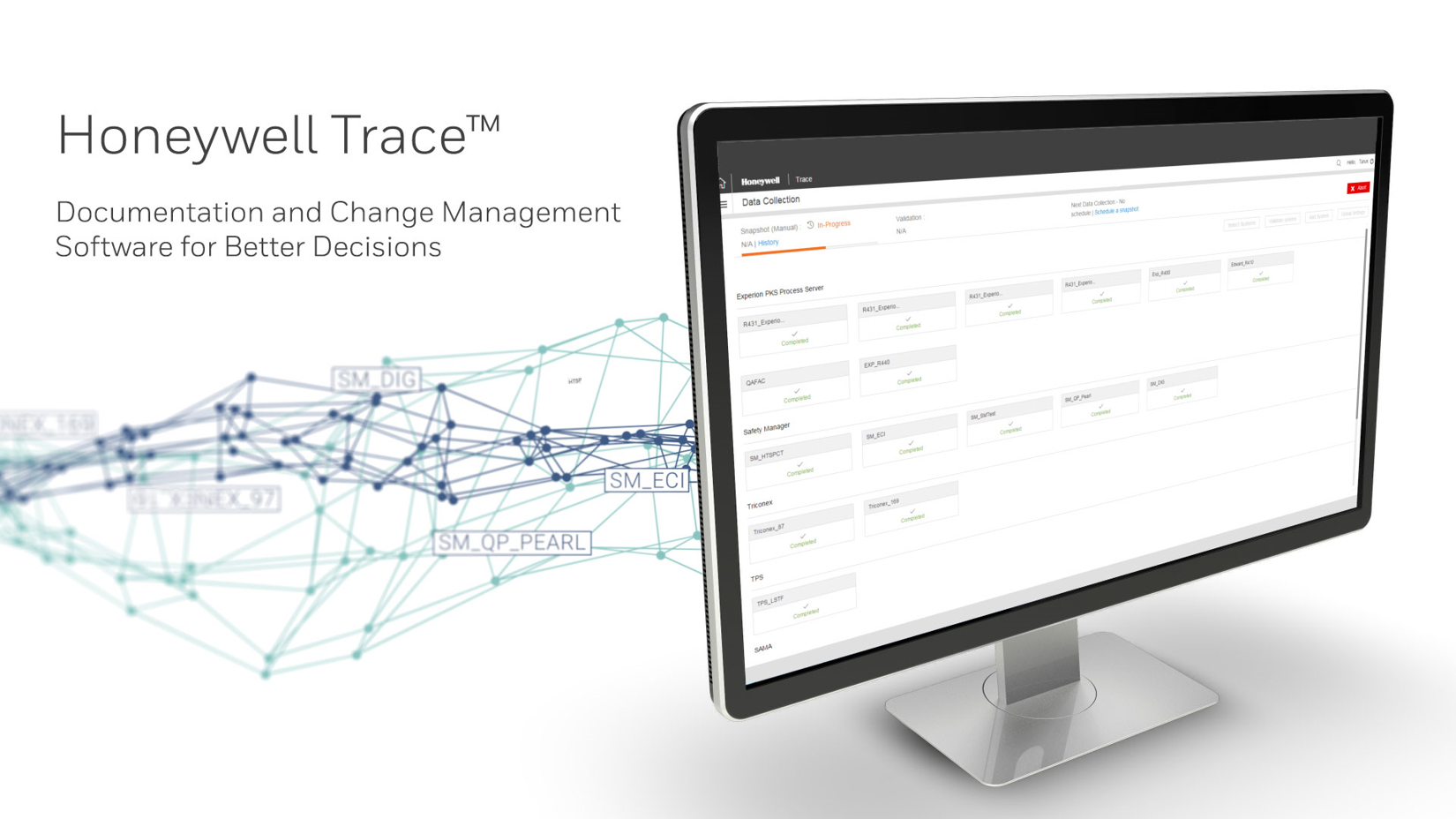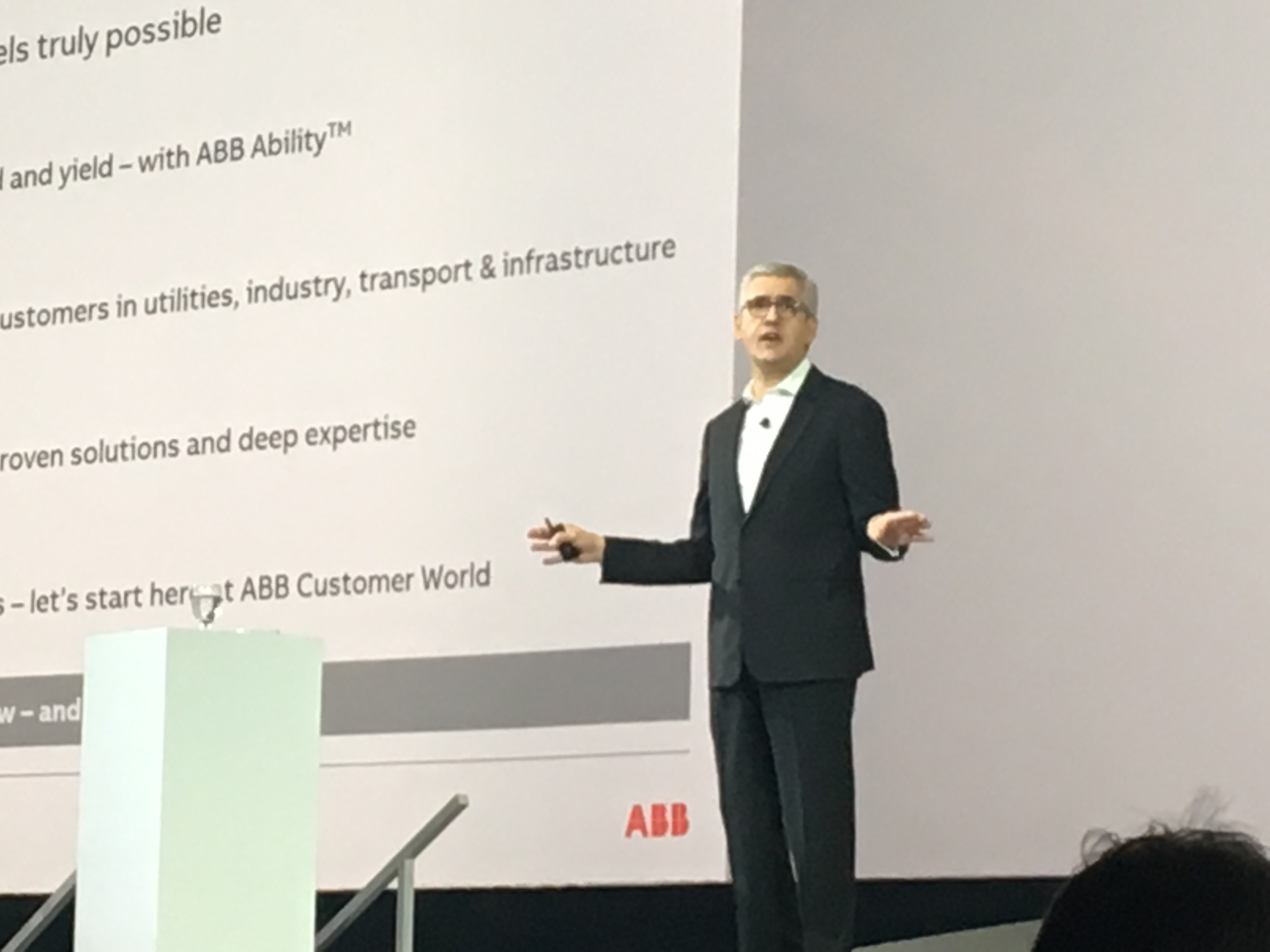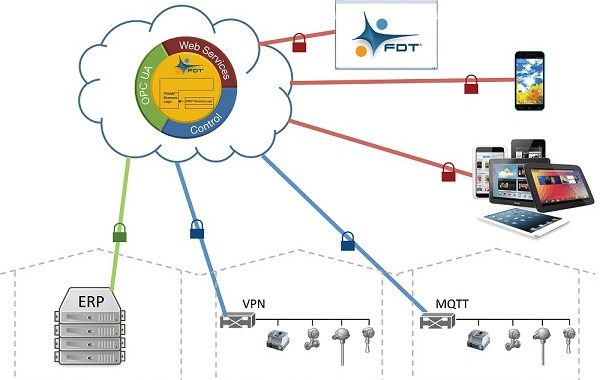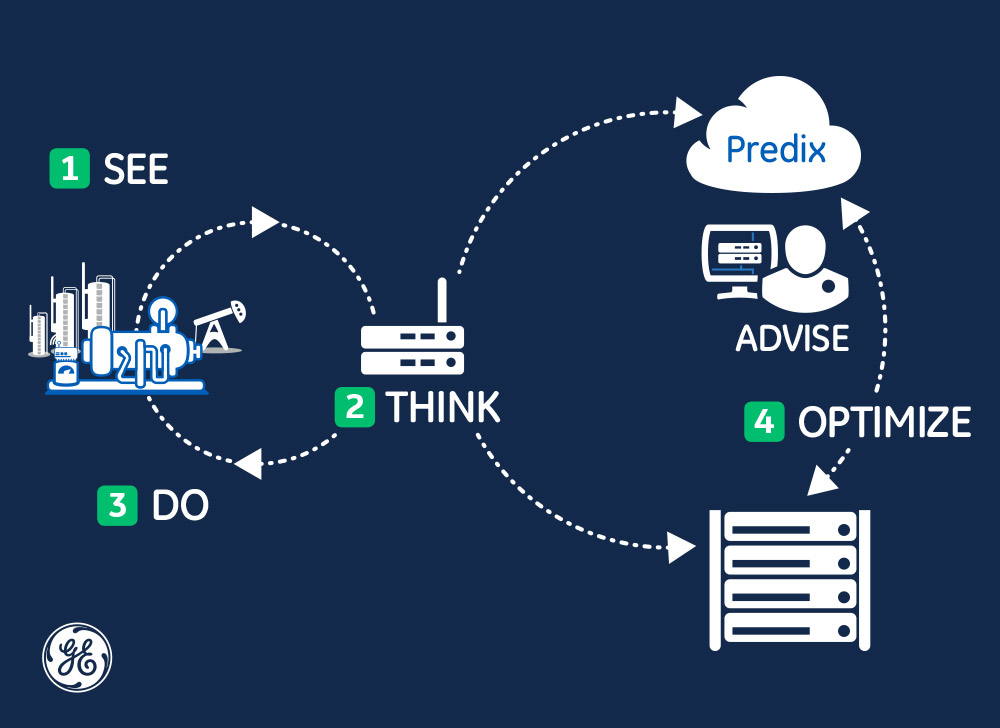
by Gary Mintchell | Mar 20, 2017 | Automation, Process Control, Software
Change management is a huge issue in automation and control. Who makes the change, when, what was done, was it authorized, and more questions. I’ve had many chats with leaders of companies who provide change management tools over the years. Here is a Honeywell solution.

Honeywell Process Solutions (HPS) today announced the introduction of documentation and change management software that will help its customers’ industrial control system integrity. Honeywell Trace replaces paper-based records and spreadsheets with an automated solution. This helps minimize errors due to changes in configurations, improve worker productivity, and simplify automation asset management by providing a single integrated view of complex system interactions.
Around the world, many process industry organizations need to meet critical management of change (MOC) challenges within their operations. In particular, plant owners/operators need to know who is interacting with control systems and when changes have been made. They also require a clear understanding of configuration anomalies.
“Driven by the growth of our outcome-based programs and a commitment that all processes and tools deliver more efficient service, it is critical that we have the ability to quickly collect and accurately report on system information, configuration history and performance conditions,” said John Rudolph, vice president and general manager, HPS Lifecycle Solutions and Services. “Honeywell Trace responds to these key requirements, providing critical data that lets users know what, when, and why actions were taken and how they compare to actions in the past. The precision and comprehensiveness of its change analysis can reduce several days of manual effort.”
Honeywell Trace is a sophisticated data collection solution that helps expand the visibility of control configurations while automating the documentation of traditional tribal knowledge and actions taken by plant personnel. These improvements will enable companies to enhance regulatory compliance, reduce configuration errors, spend less time in project planning, and minimize troubleshooting and forensics effort.
“Honeywell customers employing the Trace solution can expect a substantial reduction in manual troubleshooting, reduced quality assurance and factory acceptance test (FAT) project activities, and dramatically faster data collection,” Rudolph said.
Honeywell Trace enables plant managers, safety managers, engineers and others to see how the facility is divided and view changes that have occurred to a group of components over collected snapshots. Operations can continue as usual during data snapshots, as the software does not impact the engineering system during collection periods. Personnel can learn how changes impact performance through system health reports, better understand data flows and logic, and avoid problems during maintenance.
Trace makes it easy to identify and assign hardware statuses, reserve hardware, and improve project planning with I/O channel spare management. Engineering teams are able to maintain their network and hardware topology without having to redraw it every time a change is made. Honeywell Trace allows for better decision-making and ultimately improves operational effectiveness.
The new software documents data up to 300 times more frequently than other MOC tools and provides the most powerful search and parameter query functions. It offers smart change analysis, user-configurable defect definition capabilities, real-time system performance assessments, and an intuitive user experience design with dashboards and logical network views.

by Gary Mintchell | Mar 17, 2017 | Automation, Data Management, News, Organizations, Process Control, Technology

ABB CEO Ulrich Spiesshofer
ABB held its customer conference in Houston this week and showcased many new products and unveiled its digital enterprise platform ABB Ability.
ABB Ability is the name given to its portfolio of digital solutions. I was trying to place it into a competitive landscape when one speaker showed a slide positioning ABB Ability with GE Predix, Siemens Mindsphere, and Schneider Electric’s Ecostruxure. CEO Ulrich Spiesshofer likened it to putting all the Lego blocks of ABB’s digital offerings together.

ABB Chief Digital Officer Guido Jauret
ABB Ability is a platform, database, and analytics that allows such things as helping customers in utilities, industry, transport and infrastructure develop new processes and advance existing ones by providing insights and optimizing planning and controls for real-time operations. The results can then be fed into control systems to improve key metrics such as factory uptime, speed and yield.
“As a pioneering technology leader in digital solutions, with an installed base of more than 70 million connected devices and 70,000 control systems, ABB is uniquely positioned to support its customers’ digital transformation,” said Spiesshofer. “With ABB Ability, we are combining ABB’s entire portfolio of digital solutions and services. We are creating additional customer value by bringing together ABB’s domain expertise, advanced connectivity and the latest digital technologies. With this, our customers can achieve unprecedented improvements in operational performance and productivity.”
Digital offerings provided by ABB Ability include performance management solutions for asset-intensive industries; control systems for process industries; remote monitoring services for robots, motors and machinery; and control solutions for buildings, electric-vehicle charging networks and offshore platforms. Some of the more specialized offerings address energy management for data centers and navigation optimization for maritime shipping fleets, among many others.
Customers who are already using the portfolio of digital solutions that are now part of ABB Ability include some of the world’s leading utilities, manufacturers and service providers, among them Shell Oil, CenterPoint Energy, Con Edison, BASF, Royal Caribbean, Cargill, Volvo, BMW and many others.
“Building our solutions on the Azure platform means we can take advantage of all of its capabilities and add value with our domain-specific offering,” said ABB Chief Digital Officer Guido Jouret. “In effect, we are turning ABB’s decades of industrial domain expertise into software offerings that our customers can access through the world’s largest and most advanced digital platform. From being a hidden digital champion, we are becoming the partner of choice for customers embarking on a digital transformation. They can now know more, do more, do better, together. We can help them assess, automate, optimize and collaborate.”
 This product was the coolest thing at the show for me. It is ABB’s take on the trend toward smaller I/O devices with configurable racks. Admittedly not having first-mover advantage, ABB was able to build on existing competitive offerings and release an updated take on the technology.
This product was the coolest thing at the show for me. It is ABB’s take on the trend toward smaller I/O devices with configurable racks. Admittedly not having first-mover advantage, ABB was able to build on existing competitive offerings and release an updated take on the technology.
 ABB Ability System 800xA Select I/O, a new addition to System 800xA, is a redundant, Ethernet-based, single-channel I/O system. It supports ABB’s next-generation project execution model, Intelligent Projects, which offers a range of efficiency improvements for automation projects. With Select I/O, customers can undertake major projects on a faster schedule with fewer cost overruns. It uses standardized cabinets that allow installers to digitally marshal signals instead of using labor-intensive marshalling panels. Loop checks can be done before the rest of the system is delivered, minimizing the impact of late changes and allowing for project tasks to be executed in parallel.
ABB Ability System 800xA Select I/O, a new addition to System 800xA, is a redundant, Ethernet-based, single-channel I/O system. It supports ABB’s next-generation project execution model, Intelligent Projects, which offers a range of efficiency improvements for automation projects. With Select I/O, customers can undertake major projects on a faster schedule with fewer cost overruns. It uses standardized cabinets that allow installers to digitally marshal signals instead of using labor-intensive marshalling panels. Loop checks can be done before the rest of the system is delivered, minimizing the impact of late changes and allowing for project tasks to be executed in parallel.
ABB Ability Asset Health Center – Among the first ABB Ability solutions to be launched on Azure is ABB’s next-generation asset performance management solution, Asset Health Center 3.0. Available since January 2017, it uses predictive and prescriptive analytics and customized models to identify and prioritize emerging maintenance needs based on probability of failure and asset criticality.
ABB Ability Collaborative Operations – This powerful solution, now being brought to scale across industries, helps customers collaborate more effectively. It allows experts to work together across organization boundaries, using the same data and analytics platforms. It focuses on such outcomes as improving productivity, reducing equipment failures, lowering the cost of asset maintenance and transforming overall business performance. This is done while maximizing security and protecting data, people and assets at every level of integration. The solution has been delivering sustainable, long-term results to early adopters.
ABB Ability Digital Substation – ABB’s digital substation provides customers in the utility sector with unmatched control and efficiency. The digital substation incorporates fiber optic current sensors and disconnecting circuit breakers to reduce maintenance requirements and the need for miles of conventional cabling. ABB Ability takes these advances several steps further by combining the latest electrical gear with digital sensors and cloud computing. The result is that grid operators can make decisions based on comprehensive, up-to-the-moment information, while predictive algorithms can improve maintenance practices and asset management.
ABB Ability Smart Sensor – This smart sensor solution, unveiled last year, connects low-voltage electric motors to the Industrial Internet, allowing them to be monitored continuously. The solution, which can be easily affixed to a motor, transmits data on vibration, temperature, loads and power consumption to the cloud. Alerts are generated as soon as any of the parameters deviates from the norm, allowing the operator to take preventive action before the motor malfunctions. Early indications are that the smart sensor solution leads to a reduction in downtime of motors by up to 70 percent and extends their lifespan by up to 30 percent. Acting on the data to optimize the motor’s performance reduces energy consumption by as much as 10 percent.

by Gary Mintchell | Nov 28, 2016 | Automation, Networking, Technology

FDT IIoT Server
The FDT Group announced a revised mission statement, an IIoT Server, and agreements with other organizations—OPC Foundation, ODVA for CIP, and AutomationML–at its press conference at SPS 2016 in Nuremberg.
This highlights the role of technology organizations in this connected era—they must cooperate and collaborate or die.
“FDT is the open standard for industrial automation integration of networks and devices, harnessing IIoT and Industrie 4.0 for enterprise-wide connectivity” proclaims the organization on its updated Website.
The FDT Group launched FDT/IIoT Server (FITS) for mobility, cloud, and fog enterprise applications. The FITS solution protects industry investments in FDT through advanced business logic, well-defined interfaces and common components, and enables operating system (OS) agnostic implementation of the technology while supporting today’s integrated automation architecture.
The server features robust layered security leveraging vetted industry standards and utilizing encrypted communications with transport layer security (TLS).
FITS also takes advantage of an OPC Unified Architecture (OPC UA) annex enabling sensor-to-cloud, enterprise-wide connectivity in industrial control systems used in the process, hybrid and factory automation markets. Together, FDT and OPC UA allow sensor, network and topology information to permeate the enterprise, including mobile devices, distributed control systems (DCSs), programmable logic controllers (PLCs), enterprise resource planning (ERP) systems, the cloud, and the IIoT and Industry 4.0.
According to Glenn Schulz, managing director of the FDT Group, the FITS solution represents the key architectural role that FDT plays in an intelligent enterprise. “The FDT Group is working with the various IIoT initiatives around the world to ensure that our new architecture meets their emerging requirements,” Schulz said. “In addition, the FDT platform is being enhanced to include operating system agnostic support for standard browsers, fit-for-purpose apps, and general web services for any potential expansion. These advancements underscore our support for the hundreds of thousands of installed FDT/FRAMES and tens of millions of FDT-enabled products in the global installed base.”
It announced the release of an annex to the FDT standard for the OPC Unified Architecture (OPC UA).
The FDT/OPC UA annex is intended for implementation by automation system manufacturers in FDT Frame Applications (FDT/FRAMEs). System suppliers with an FDT/FRAME embedded in their distributed control system (DCS), asset management system, programmable logic controller (PLC) or other system have the ability to include an OPC UA server in an application accessible from any OPC UA client application.
The combined FDT/OPC standards create a single system infrastructure that standardizes the connection of industrial networks, automation systems and devices. This approach enables unification of system engineering, configuration and diagnosis in Industrie 4.0, and supports Industrie 4.0 devices, but is also able to build a bridge to Industrie 3.0 networks and devices.
Also announced was release of an updated annex to the current FDT standard for ODVA’s media-independent Common Industrial Protocol (CIP). Network adaptations of CIP include EtherNet/IP, DeviceNet, CompoNet and ControlNet. The latest version of the CIP annex to the FDT specification enables the use of proven and widely implemented ODVA networks in FDT/FRAME Applications with the latest enhancements.
And a further announcement was integration of the open AutomationML data exchange standard into open, non-proprietary FDT Technology. Together, the two standards will help advance global adoption of Industrie 4.0 solutions.
First developed in 2006, AutomationML is intended to standardize data exchange in the engineering phase of production systems.

by Gary Mintchell | Nov 22, 2016 | Automation, Manufacturing IT, Networking, News, Technology
Last week was GE Digital’s Minds + Machines Conference in San Francisco. This Industrial Internet (or Internet of Things to the rest of us) gathering showcases the latest of GE’s digital portfolio–including GE Automation and Control (the successor to GE Intelligent Platforms, successor to GE Fanuc Automation, whew).

Jim Walsh

Rich Carpenter
I tried to arrange my schedule to make it out there, but there had been too many trips in Sept., Oct., and Nov. for my time and expense budget to make it. So, we had a conference call meeting with Jim Walsh, President and CEO of GE Automation & Controls, and Rich Carpenter, Product GM of Control Platforms also at GE Automation & Controls. We talked about the Industrial Internet, digitalization, and new products.
Included in my news below are additional news from the M+M event including acquisition and product news.

The point most interesting was Walsh and Carpenter discussed the edge device of the network as the controller (PLC). (See the graphic) Almost all of the other companies I talk with are developing an edge device separate from the controller. Carpenter described the closed loop control as “see-think-do”, and then the Industrial Internet plus Predix (GE’s cloud-enabled software product) analytics adds an “optimize” loop to the controller. It can then reflect back on experience and make changes as necessary.

Take for example large pumps in a water/wastewater application. They, of course, are energy consumers. By adding analytics from Predix, the controller could be modified to operate in a more energy efficient manner. One example proved out a $1.5 million per year savings. Another benefit is productivity improvements which Walsh said they had witnessed personally. They referred to the Industrial Internet Control System (IICS), which I will discuss later [Note: much like my Automation Fair update, this one will be long, because there is so much.]
And now, on to the news.
- GE releases new suite of Predix applications and services; introduces the Predix System
- Acquisition of Bit Stew Systems enables efficient data ingestion for industrial applications
- Acquisition of Wise.io strengthens machine learning and data science capabilities for Predix and enables enhanced Digital Twin development
- Meridium acquisition places GE in the lead for Asset Performance Management app development; acquisition of ServiceMax positions GE to lead in service transformation
- Ecosystem expands with independent software vendor program to speed industrial application development; more than 19,000 developers now building on Predix
- Digital orders on track to exceed $7B, a growth of 25%+ in 2016
- Digital thread productivity exceeds $600 million and accelerating into 2017
In 2016, orders from GE’s portfolio of software solutions are on track to climb 25%+ to more than $7 billion. Demonstrating the strength of Predix within GE, digital thread productivity will exceed $600 million, accelerating into 2017.
“The opportunity for industry is now,” said Bill Ruh, Chief Digital Officer of GE and CEO, GE Digital. “The Industrial Internet is profoundly transforming how we operate and our ability to deliver greater productivity for GE and for our customers. Connected machines, coupled with deep machine learning, are more powerful than anything we have seen. These strategic investments in both the Predix platform and our partners continue to attract industrial companies and provide them with tools they need to embark on their own digital industrial transformations.”
EXTENDING PREDIX FROM THE EDGE TO THE CLOUD
GE unveiled a new suite of software and applications.
This release will focus on expanding the platform and scaling development of Digital Twins – virtual representations of physical assets that comprise the world’s industrial infrastructure – through Predix apps and toolkits.
This new set of components can run on a variety of operating systems, devices and form factors – from sensors and controllers to gateways, server appliances and the cloud – making Predix a distributed system for the Industrial Internet and a complete “edge-to-cloud” offering.
GE also launched new Predix-based solutions, designed to help customers harness the power of the Industrial Internet:
Current, designed to analyze and optimize energy use and operational efficiency use across lighting, HVAC and other systems.
Digital Substation, extends maintenance optimization to the electricity grid.
Health Cloud, Cloud-enabled patient outcomes are linking clinical feedback to transformative radiology pathways.
Predictive Corrosion Management, a new Asset Performance Management (APM) solution that provides continuous inspection data and cloud-based analytics of pipe conditions to help operators manage corrosion-related risk.
Digital Power Plant software for gas, steam and nuclear plants, which features new tools to help customers reduce unplanned downtime by up to 5%, reduce false positive alerts by up to 75%, and reduce operations and maintenance costs by up to 25%.
Digital Hydro Plant, a suite of apps combining both software and hardware solutions designed to support Hydro customers globally, helping them get the most out of assets over the lifetime of a plant.
ACQUISITIONS
GE Digital announced it has acquired Bit Stew Systems to bring its data intelligence capabilities to Predix and other industrial solutions. Bit Stew applies its machine learning and artificial intelligence (AI) capabilities to automate the process of data modeling, mapping and ingestion, accelerating time to value for customers, such as BC Hydro, Pacific Gas & Electric and Scottish & Southern Energy. This acquisition will help GE Digital provide a solution to organize large amounts of data through efficient data organization at the edge or at the source of the data – the asset.
GE Digital also acquired Wise.io, a leading machine learning and intelligent systems company. This acquisition will enable GE Digital to further accelerate development of advanced machine learning and data science offerings in the Predix platform. The Wise.io team deepens GE’s machine learning stack and will spearhead innovative solutions in GE’s vertical markets to develop its machine learning offerings.
GE also announced a program dedicated to independent software vendors (ISVs), aimed at spurring development of industrial solutions and extending the reach of the Predix platform. Through these partnerships, GE will share its industry expertise and allow partners to use Predix as the building block for new industrial applications to enhance various components of industrial operations – such as maintenance, content development and asset management.
Inaugural launch partners include: Box, Decisyon App Composer, Entercoms, Ericsson, Mobideo, Nurego, OAG Analytics, Pitney Bowes and Splunk. The addition of ISVs enhances the growing ranks of the GE Digital Alliance Program, which launched in February. The alliance program now boasts more than 270 partners around the world, including major enterprise players such as AT&T, EY, Intel, Microsoft and Tata Consultancy Services (TCS).
GE’s Industrial Internet Control System

GE’s Automation & Controls business introduced GE’s new Industrial Internet Control System (IICS) at its 2016 Connected Controls Symposium at the company’s Global Research Center in Niskayuna, NY. IICS delivers new levels of productivity for industrial assets and processes by integrating controls with Industrial Internet analytics – at scale yet modular and flexible for industrial settings worldwide.
Early IICS adopters report a +7% gain in asset performance and 22% increase in efficiency. By leveraging GE’s deep domain and controller expertise, the IICS solution empowers customers to improve operational efficiency, optimize production and unlock new revenue opportunities.
The system utilizes GE’s Field Agent technology as the gateway between the asset and the Industrial Internet. Field Agent provides a rugged, pre-configured solution for secure data collection and conveyance from the machine to fuel analytics that improve operations.
GE’s Industrial Internet Control System also includes:
- Industrial Cloud Platform – Provides real time process optimization and control; minimalizes disruption to deployed application; Creates new value over time without having to retrofit
- Secure Cloud Connectivity – Predix ready; Provides secure data collection; Enables advanced analytics; Form factors to meet the need
- Outcome Optimizing Controllers – Real-time control; Defense in-depth security; Decreases time to market; Helps reduce unplanned downtime and enhance system performance
- Mix & Match I/O – Remote, real-time diagnostics; Wide range of communication options; Modularity-simple scalability; Drives improved availability and simplified maintenance
- Professional Services – Real Time control; Security at its core; Decreases time to market; Helps reduce unplanned downtime and enhance system performance
- Intelligent Apps – Real Time Control; Security at its core; Decreases time to market; Helps reduce unplanned downtime and enhances system performance
IICS features dual or quad core configuration which provides safe and secure communication with either cloud-based or locally hosted algorithms and applications.
Two structural innovations make the new solution “future proof” for customers, who want hardware assets to be long-lived but remain optimally functioning.
- Industry-first Hypervisor control technology that separates operations from software so that the software can be upgraded without affecting the physical controller, allowing the hardware to stay in place and up to date.
- ComExpress processor technology that allows the processor to be updated as needed, again without replacing the controller. This is critical to support the growing computational power available from the Industrial Internet, including GE’s Digital Twin predictive model for optimizing assets with minimal interruption.

by Gary Mintchell | Nov 2, 2016 | News, Organizations
This announcement reveals important advances in the cause of suppliers, owner/operators, and standards organizations coming together to support and use interoperability standards. Much progress has been made since the OGI Pilot demonstration in 2009. I have written two white papers on the subject that you can download here.
MIMOSA, which provides information standards for physical asset management, announced Nov. 1, 2016 that SAP has joined the organization to incorporate MIMOSA’s industry standards on SAP Asset Intelligence Network. Alan Johnston, president of MIMOSA said, “I am very pleased to have SAP join MIMOSA and support the Open Industrial Interoperability Ecosystem. This way, we expect that many more of the owner/operators in asset-intensive industry groups will gain business value from SAP Asset Intelligence Network running on the new SAP HANA Cloud Platform when they leverage our open standards.”
MIMOSA provides a broadly used portfolio of industry standards for physical asset management and leads the development of the Open Industrial Interoperability Ecosystem (OIIE), in cooperation with other industry standards associations. Ken Dunn from BP, who is chairman of the MIMOSA board, explained: “The OIIE incorporates a portfolio of international and industry standards which enable sustainable standards-based interoperability. It is designed to dramatically reduce the cost of integration across a heterogeneous information technology environment and to facilitate the Industrial Internet of Things (IIOT). The OIIE is even more important in economically challenging times, as it helps owner/operators reduce cost and complexity, while continuing to sustain critical programs around asset integrity management and operational risk management. SAP’s commitment to these industry standards is a major step forward in their widespread adoption.”
SAP Asset Intelligence Network will provide a global registry of industrial equipment designed to enable collaborative business models. Achim Krueger, VP of Global Solutions for the SAP Extended Supply Chain (which includes Asset Management and HSE), commented, “Being part of this interoperability standards organization will become a key support of SAP Asset Intelligence Network, benefitting our entire ecosystem of manufacturers, engineering suppliers and asset operators. The intent is to enable them to automatically exchange their asset management data and reduce manual steps in the process. This is a great example of how SAP continues to work with the industry to co-innovate new solutions that are important for our customers.”
Ken Evans, head of SAP Global O&G Business Unit, stated, “As our customers digitally transform their global operations, they need greater flexibility in their business and operations technology platforms. We view joining MIMOSA as an important step to support their ability to openly integrate SAP Asset Intelligence Network with their ecosystem of service providers. We are excited to continue our innovations with the O&G industry and to utilize standards to improve overall enterprise process efficiency and access to operational content.”






 This product was the coolest thing at the show for me. It is ABB’s take on the trend toward smaller I/O devices with configurable racks. Admittedly not having first-mover advantage, ABB was able to build on existing competitive offerings and release an updated take on the technology.
This product was the coolest thing at the show for me. It is ABB’s take on the trend toward smaller I/O devices with configurable racks. Admittedly not having first-mover advantage, ABB was able to build on existing competitive offerings and release an updated take on the technology. ABB Ability System 800xA Select I/O, a new addition to System 800xA, is a redundant, Ethernet-based, single-channel I/O system. It supports ABB’s next-generation project execution model, Intelligent Projects, which offers a range of efficiency improvements for automation projects. With Select I/O, customers can undertake major projects on a faster schedule with fewer cost overruns. It uses standardized cabinets that allow installers to digitally marshal signals instead of using labor-intensive marshalling panels. Loop checks can be done before the rest of the system is delivered, minimizing the impact of late changes and allowing for project tasks to be executed in parallel.
ABB Ability System 800xA Select I/O, a new addition to System 800xA, is a redundant, Ethernet-based, single-channel I/O system. It supports ABB’s next-generation project execution model, Intelligent Projects, which offers a range of efficiency improvements for automation projects. With Select I/O, customers can undertake major projects on a faster schedule with fewer cost overruns. It uses standardized cabinets that allow installers to digitally marshal signals instead of using labor-intensive marshalling panels. Loop checks can be done before the rest of the system is delivered, minimizing the impact of late changes and allowing for project tasks to be executed in parallel.












